This was published 5 years ago
British Airways' 100th anniversary: Five key moments in the airline's history
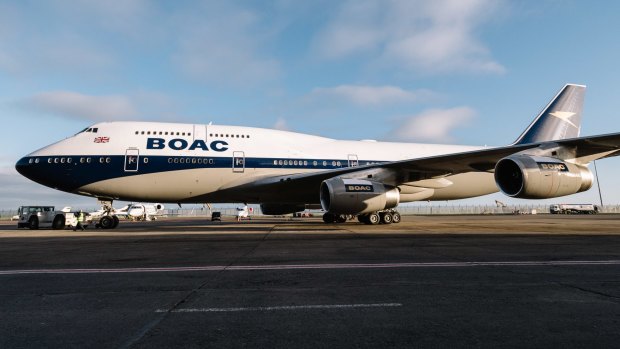
As part of the celebrations for its 100-year anniversary, British Airways has begun painting four of its aircraft in retro designs. This 747 has been given the BOAC livery from 1964 to 1974.Credit: Stuart Bailey
There's a wonderful monochrome image of a BOAC de Havilland Comet 4 over Sydney Harbour. The harbour bridge is prominent, but look closely and you'll see there's no Opera House. That's because the photo was taken 60 years ago and the first British jet flew into Sydney's Mascot in 1959 before construction began on the Opera House. That flight slashed the journey time from London to Sydney from 47 hours to 36.
Four years earlier, the British Overseas Airways Corporation, one of the many forerunners of British Airways, had introduced a "tourist class" service on its Lockheed Constellation between Britain and Australia, introducing less wealthy travellers to airline travel.
Apart from Qantas, no international airline has had such a long-standing relationship between Australia and Europe as British Airways. So, as the airline celebrates its "centenary", let's mark some of the key moments in its evolution and its place in Australian travel, with much thanks to BA's official historian.
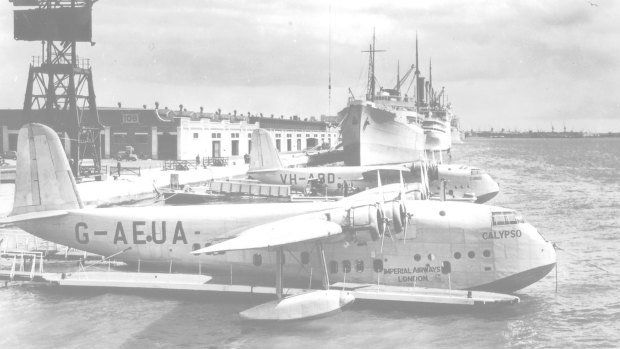
One of the flying boats that pioneered the post World War II route from Southampton to Rose Bay, Sydney.
WHAT'S IN A NAME?
British Airways didn't exist until 1936 and for most of the 20th century Britain's national carrier flew under a succession of other names, most notably BOAC and British European Airways. Yet the airline dates its birthday back to August 25, 1919. This is believed to be because Koninklijke Luchtvaart Maatschappij – better known as KLM – is generally considered the world's longest surviving airline. Its first flight from London's Croydon airport took off to Amsterdam, with a British pilot at the controls of a leased British plane, on May 17, 1920.
WORLD'S FIRST INTERNATIONAL PASSENGER SERVICE
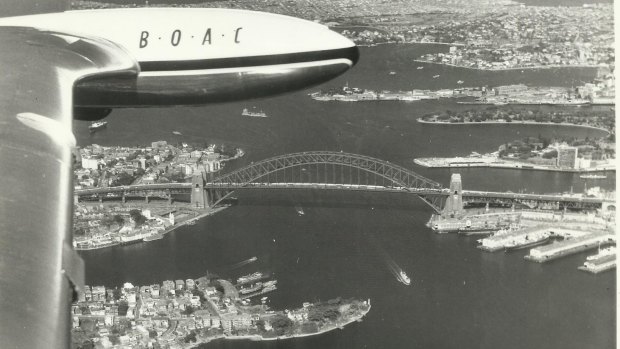
The De Havilland Comet's first arrival in Australia (before the Sydney Opera House was built).
Regardless, it's accepted the world's first scheduled international service took off on August 25, 1919, at 9.10am, from London's Hounslow Heath bound for Paris, piloted by "Bill" Lawford. The only passenger was an Evening Standard reporter who had paid Britain's first commercial airline, Aircraft Transport and Travel, 20 guineas for the privilege (though the flight also contained several "brace of grouse destined for the tables of discerning Parisians").
According to the reporter's exclusive after the de Hallivand's arrival at Le Bourget, the trip involved much "hedge-hopping" and "wave-hopping" as Lawford (in an open cockpit!) followed the railway lines and cross-Channel ferries, due to poor visibility, before rising to the maximum height of 4000 feet (1220 metres) over France.
Still, the first international commercial flight, was deemed a huge success, flying "at express speed" and taking a mere 2½ hours to cover 350 kilometres.
LONDON TO AUSTRALIA ... IN JUST 12 DAYS
Aircraft Transport and Travel was joined by a plethora of privately-owned British airlines offering international journeys with flying aces from World War I as pilots. But the Brits struggled because rival European airlines were subsidised by governments. In 1924, British airlines were rationalised and Imperial Airways (the real forerunner of BA) was created with a mandate to develop routes to the furthest reaches of the British Empire: South Africa, India and Australia.
Fast forward to April 13, 1935, and Imperial and Qantas launched its ground-breaking, 20,500-kilometre service from London's Croydon airfield to Brisbane. The journey took just 12 days, leaving London at lunchtime on a Saturday, and arriving the following week at Brisbane – after 32 stops. Part of the trip, Paris to Brindisi, was completed by rail. Mussolini's fascist government refused permission for a foreign airline to fly over Italian airspace.
DON'T MENTION THE WAR
BOAC started operations on April Fool's Day 1940, during Britain's "darkest hour" as Imperial merged with British Airways. During World War II, BOAC and Qantas joined forces, particularly on the Horseshoe Route between Auckland and Durban that kept wartime correspondence flowing throughout the "empire".
Immediately after Germany's surrender, the two airlines combined on two different services. On May 31, 1945, the first post-war flight from Britain to Sydney left Bournemouth. A year later, they introduced a twice-weekly flying boat service between Poole harbour and Sydney's Rose Bay, which took just five days, via Egypt, Iraq, Pakistan, India, Burma and Singapore. And before May 1946 was out, the first post-war BOAC/Qantas land service began using converted Avro Lancaster bombers cunningly disguised as Lancastrian passenger planes.
The Lancastrian only accommodated nine passengers seated along the side of the fuselage like parachutists. But it did contain what it is arguably the first "flat bed" in commercial aviation – a bunk in what would now be considered the overhead locker. The switch over location between BOAC and Qantas staff was Karachi.
ONWARDS AND UPWARDS
In December 1948, the elegant four-engine Lockheed Constellation began a weekly service that slashed flying time between Britain and Australia. A poster from that era, advertising Australia to Britons, shows outback stockmen watching the Constellation soar above them in a gum-strewn blue sky.
The Constellation record was itself smashed in 1953 when British European Airways, usually confined to Europe, entered the London-to-Christchurch air race to publicise the British-made Vickers Viscount V700's speed between "short legs" (19,900 kilometres in less than 41 hours). But it was the Comet that introduced the "jet age" to Australia, quickly followed by Boeing's 707, which BOAC used on Australian services from 1962. Another poster, showing a blonde female surfer striding towards the Pacific is from that period, circa 1965.
Over the next 30 years British Airways purchased 36 Boeing 747s – the original "jumbo jet" – more than any other airline and several flew to Australia. But BA's Concorde, which flew at 2180km/h (cruise speed) from 1969-2003, never had a chance to test the record to Sydney.
FIVE FAMOUS BA FLIGHTS
1938
After meeting Hitler following the Nazi invasion of Czechoslovakia, British Prime Minister Neville Chamberlain emerged from his British Airways flight from Munich, proclaiming "Peace in our time!"
1942
Winston Churchill was the first British PM to fly across the Atlantic when he travelled to meet US President Roosevelt. His BOAC Boeing 314 flying boat flew from Plymouth, via Bermuda and Norfolk, Virginia, then on to Washington DC.
1952
After the death of her father, King George VI, Princess Elizabeth left Kenya instead of continuing her royal tour to Australia. She arrived on a BOAC plane at Heathrow as Queen Elizabeth II.
2005
British PM Tony Blair was aboard a British Airways 777-200 when it set a new record for the world's longest non-stop commercial flight from Brussels to Melbourne – 17,157 kilometres in 18 hours 45 minutes.
2011
Queen Elizabeth and the Duke of Edinburgh flew the first non-stop flight from Perth to London aboard a BA 777 after a Commonwealth Heads of Government Conference. Now Qantas flies the 14,498 kilometre non-stop route in about 18 hours and plans a non-stop flight from Sydney to London by 2022.
SEVEN FAMOUS BA UNIFORMS
1922
Daimler Airway was a subsidiary of BSA (Birmingham Small Arms Company, known for its engines and motorcycles). Swallowed by Imperial, and thus BA, it employed the first "cabin boys" to serve passengers.
1967
Until the 1960s, male and female BA flight attendants wore military-style uniforms. That changed when the first made-to-measure uniforms for the 1500 female "stewardesses" employed by British European Airways were designed by Sir Hardy Amies, the Queen's couturier.
1967
Meanwhile, BOAC introduced paper "mini-dresses" for stewardesses flying to the West Indies. Meant to be discarded after each flight, legend has it sometimes they didn't last that long, with "high-spirited male passengers tempted to take a cigarette lighter to see what would happen".
1969
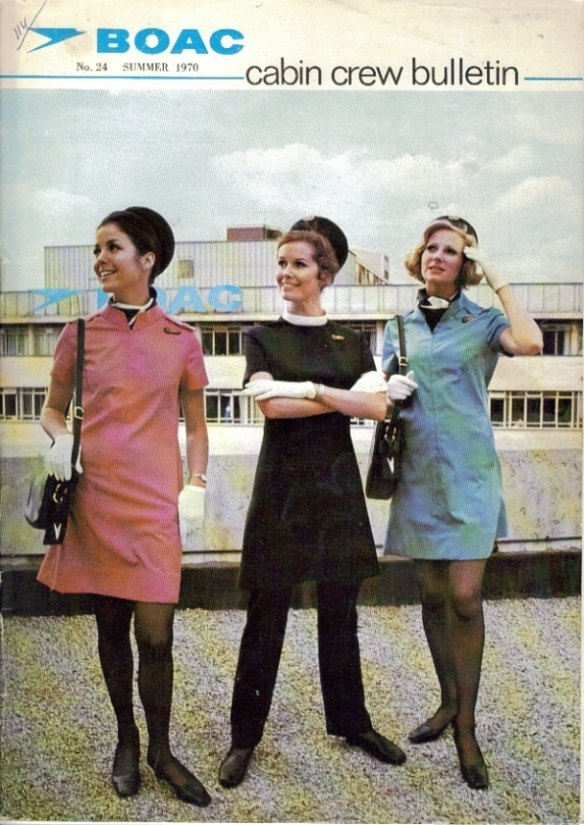
To celebrate delivery of its first Boeing 747s, BOAC awarded Clive Evans the commission of designing its new female uniform, beating Mary Quant. It chose between Caribbean blue or coral pink for its summer uniform, which was made from Terylene and cotton so it could be washed in a hotel sink and left to drip-dry overnight.
1992
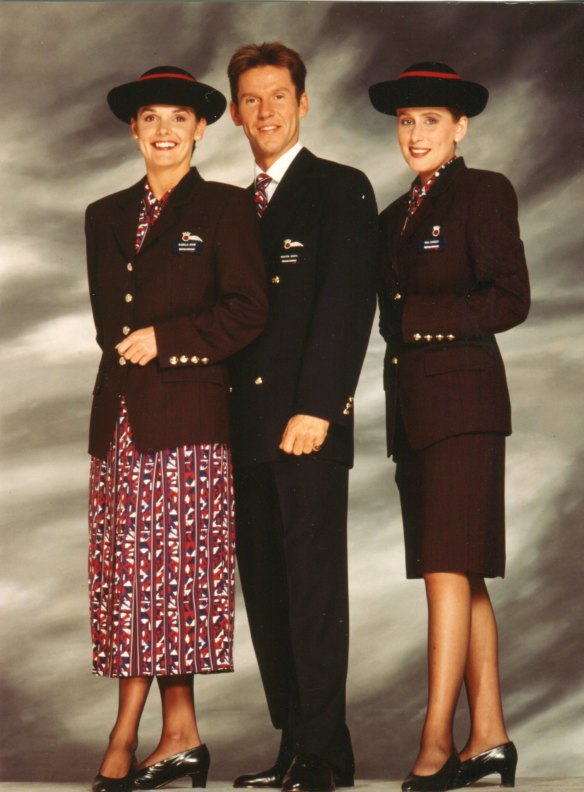
Roland Klein's distinctive red, white and blue vertical stripes had been considered a great success, but Paul Costelloe produced what many regard as the signature BA outfit: a classically tailored single-breasted suit with a silky print blouse or dress and a distinctive upturned boater.
2004
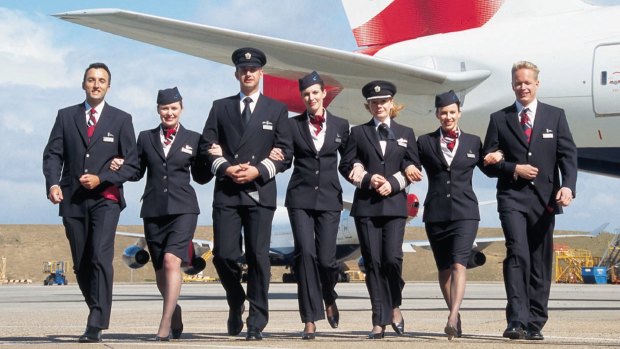
Julien MacDonald, whose outfits had been worn by Nicole Kidman, Kylie Minogue and many other celebrities, was tasked with designing outfits for 25,000 staff of different body shapes and sizes.
2019
Ozwald Boateng is BA's new designer. His top secret uniforms, now for 32,000 staff, will be unveiled before the "centenary" on August 25 this year.
FIVE OLDEST INTERNATIONAL AIRLINES (without changing names)
KLM: 1920
Its first flight, from London to Amsterdam, used a British pilot at the controls of a leased British plane.
Qantas: 1920
Originally it went by the name Queensland and Northern Territory Aerial Services, but what Aussie ever called it that? Its first international passenger flight in 1935 was from Darwin to Singapore.
Delta: 1928
Now the world's second-largest airline, Delta began in 1924 as a crop-dusting service but became Delta when it started taking passengers. It's first international flight in 1953 was from New Orleans to Caracas via Havana.
Aeroflot: 1932
Founded in 1923, its first international passenger service was from Moscow to Stockholm in 1937.
LOT Polish Airlines: 1929
Its first international route, Warsaw to Vienna, flew in 1929 but LOT ceased operations during World War II.
Sign up for the Traveller Deals newsletter
Get exclusive travel deals delivered straight to your inbox. Sign up now.